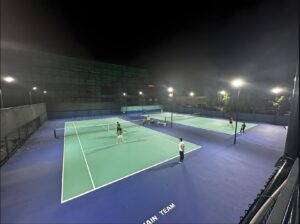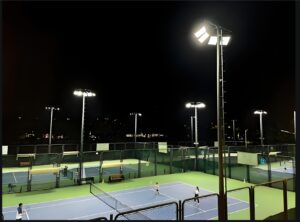One of the standout features of LED (Light Emitting Diode) lighting technology is its ability to provide precise control over light direction and spread. Unlike traditional light sources, such as incandescent or fluorescent bulbs, LEDs offer a high degree of versatility in how light is emitted, shaped, and directed. This precision makes LEDs particularly valuable in sports lighting, where optimal light distribution is critical for performance, visibility, and broadcast quality. Below, we explore how LEDs achieve this precise control and how it benefits various applications, particularly in sports venues like tennis courts.

 5. Uniform Lighting and Elimination of Shadows
5. Uniform Lighting and Elimination of ShadowsLED technology’s ability to provide precise control over light direction and spread is one of the key reasons it has become the preferred lighting choice for sports venues worldwide. From its directional light emission to its customizable optics, LEDs offer unparalleled flexibility in achieving the right light distribution for different sports. In tennis, where consistent, uniform lighting is essential for player performance and broadcast quality, LEDs provide the precision required to ensure clear visibility, eliminate shadows, and reduce glare. Additionally, with the ability to adjust beam angles, dimming levels, and color temperatures, LEDs allow for highly adaptable lighting solutions that can be tailored to the specific needs of each event. This level of control ensures that athletes and spectators alike benefit from an optimized lighting experience.

In sports lighting, especially in high-performance venues like tennis courts, controlling glare and light spill is crucial for ensuring both player and viewer comfort. Glare occurs when light is directed into areas where it becomes uncomfortable or distracting, while spill refers to unwanted light spilling into areas not meant to be illuminated. Both of these lighting issues can detract from the overall experience and affect performance, safety, and broadcast quality. Here, we explore the importance of controlling glare and spill and the benefits this control brings to both players and viewers.
(To Be Continued)
Get in touch for free lighting customization